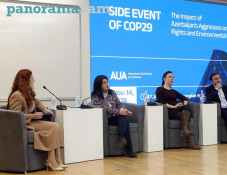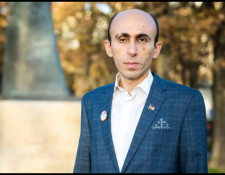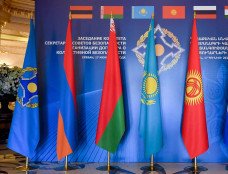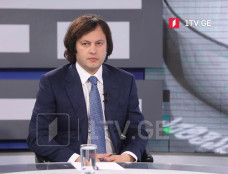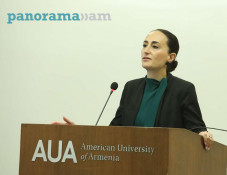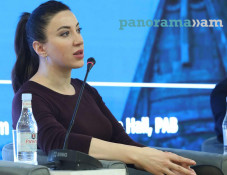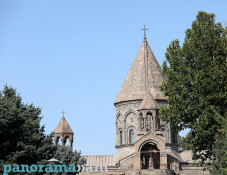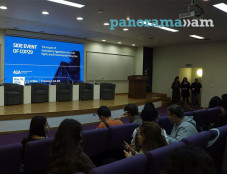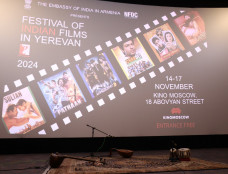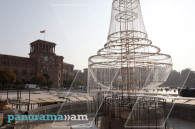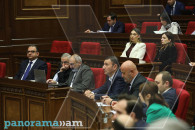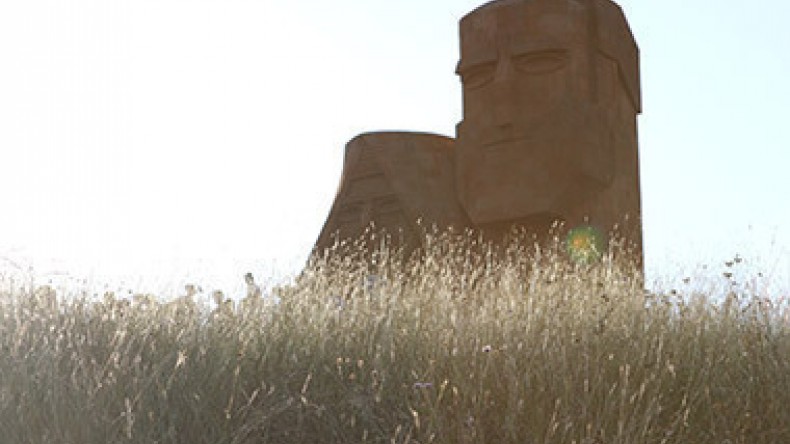
Corriere della Sera: Sooner or later world will accept that Artsakh people are true Christians and Armenians
“Olibanum smoke and flickering candles quivering the strings of the soul. These are the strongest impressions of a Sunday morning in Karabakh,” Marco Merola writes for the weekly appendix to the Italian newspaper Corriere della Sera, where he shares his impressions of Nagorno Karabakh Republic.
A longhaired man and his daughter pray in inspiration and then knee on a big carpet in the centre of Gandzasar church, while the others present calmly pray, the journalist writes.
He notes that Gandzasar is a much-respected monastery in the NKR. Knyaz Hasan Jalalyan built it in the first half of the 13th century. According to a legend, the monastery was constructed to bury John the Baptist’s cut head, which Knyaz Hasan had brought from the Iberian Peninsula. Until the 19th century, Gandzasar was the undisputable centre of the religious life in Artsakh.
In Gandzasar, the author met two young men, Hayk Hakobyan and Mikael Mkhitaryan, who had arrived from Yerevan commissioned by the Institute of Archaeology and Ethnography of the National Academy of Sciences of Armenia.
“We are here to study the numerous inscriptions emblazoning the walls of the church. They contain information about the donations the local families made throughout centuries. The Turks burnt up all the books and manuscripts. Thus, those manuscripts became a very important proof,” Hayk and Mikael said.
The real aim of the research, however, was different. They intended to show that Artsakh belongs to Armenia, rather than Azerbaijan, by revealing the roots and genealogy of Armenian aristocracy in that land. Merola learnt that Yerevan is going to give a few thousand ancient books to a specially equipped place at the monastery in the months that follow. Those books are currently kept in Matenadaran, the Scientific Research Institute of Ancient Manuscripts. This will make Gandzasar a “branch” of Matenadaran. The message is clear – “the Armenians and Artsakhians are one face and one race.”
The efforts of Gregory the Enlightener, who spread Christianity in every corner of Great Armenia in 301, had a powerful unifying effect in that sense. His grandson, Bishop Grigoris, was his deserved successor, who died in a city near the Caspian. The bishop’s disciples took his body to bury in Amaras Monastery. Merola decided to check the truthfulness of the legend by himself.
“The place is beautiful and romantic in its detachment,” the journalist admires. The monastery was looted and destroyed during the war, but the tomb remained intact only because the troops of the adversary side did not find it. “We arm ourselves with torches and go down a round staircase. Suddenly, the tomb ‘appears’ in front of us,” the journalist writes.
The famous saying comes to his mind: “He who controls the past controls the future.” To Merola, these words are especially true when it comes to Artsakh. He points out that the only obstacle for large-scale historical and archaeological researches here is the shortage of resources – a side effect of the blockade.
Further, Merola writes about the ancient city Tigranakert. Now, the author and his company were accompanied by Nadya Paskual, a tourism expert, and Hamlet Petrosyan, an archaeologist, who had dedicated ten years of his life to studying Tigranakert. Paskual said the Armenian king Tigranes the Great (99-55 BC) was the founder of the city. The Italian journalist and his group went to the valley of Khachenaget River on the side of Vankasar Mountain. They went up the mountain, about 450 metres, and then stopped in front of huge limestone blocks set with geometric accuracy.
According to Merola’s article, Tigranakert is an excellently preserved ancient city in the Caucasus, beautiful as Antioch and Seleucia. The cyclopean walls, which protected the acropolis from the enemies, fully touch the cliff despite the slope. “Imagine what a beautiful sight would open to you from here – white stone and parks, many parks,” Petrosyan admires.
Further, Merola shares his impressions from Artsakh State Museum. Back in 1938, German archaeologists found numerous artefacts dating back to the second millennium BC in the territory of Artsakh as they were searching for traces of former civilisations. Armine Grigoryan, the director of the State Museum of the NKR, told the journalist the museum started to fully function only after the fall of the Soviet Union. She said in the 1970s, the museum had coins of Tigranes the Great’s times. However, the museum could not demonstrate them more than one day because of the Azerbaijanis’ protest, and the director of the museum was fired. The author states that one must make sure to visit the museum whose floors separate it in accord with eras starting from the Stone Age and ending with the war of the 1990s.
The author had the impression that the people of the NKR work to promote tourism. Projects of eco villages are elaborated. Each of those people feels themselves as a part of something very great.
Hasmik Mkhitaryan, the head of Karabakh Carpet company, is one of them. She moved from Yerevan to the NKR in 2013. The local government recovered the old carpet weaving school in an intention to revive the ancient traditions, which had been cut short because of the war. “I moved here because I felt I must help these people,” Hasmik said. She meets her family once a month. Either she goes to Yerevan, or her family visit her in Artsakh.
“It is difficult, but when I see the satisfaction of my girls (this is how she calls all the women working at the company even if they age from 16 to 65), I calm down,” she explains. At average, one can buy a Karabakh carpet for approximately 80 thousand drams (160 euros). A carpet for Rome Pope was woven here. Pargev Martirosyan, the Archbishop of Artsakh diocese, will be probably be the one getting it to the Pope. The Archbishop does not conceal his sympathy towards Pope Francis. “A brave person defencing the justice,” this is how he describes the Pope.
“We are true Christians and Armenians. Sooner or later the world will accept that,” Pargev Martirosyan, the Archbishop, said.
Newsfeed
Videos





